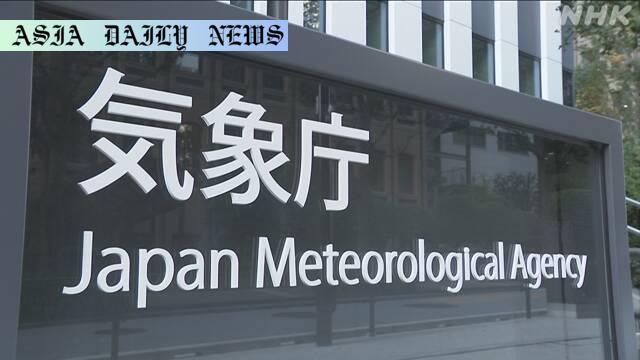Myanmar quake: Japan’s Meteorological Agency explains the 7.7-magnitude earthquake caused by horizontal land ‘strike-slip’ faults.
Myanmar quake was caused by horizontal strike-slip faults.
Impact felt 1,000 kilometers away, even collapsing buildings in Bangkok.
Strong tremors induced long-period ground motion phenomena.
Magnitude 7.7 quake followed by a magnitude 6.4 tremor.

Understanding the Myanmar Quake: The Dynamics of a Strike-Slip Fault
The Myanmar earthquake of magnitude 7.7 that struck on Friday has drawn worldwide attention not only due to its intensity but also the science behind it. Japan’s Meteorological Agency provided a clearer picture by explaining the cause – horizontal slips of land along “strike-slip” faults. This geological phenomenon involves tectonic plates moving horizontally against one another, releasing intense seismic energy. Notably, the same fault type was responsible for the devastating Kumamoto earthquake in Japan in 2016. Instances like these emphasize the critical need to study and monitor tectonic behavior closely to mitigate potential disasters.
Strike-slip faults are known to produce sudden and impactful quakes. The 7.7 magnitude of Friday’s quake is likened to the strength of past quakes, such as the Noto Peninsula incident, highlighting the regional susceptibility to tectonic upheavals. Areas stretching from Myanmar into parts of China have been historically prone to high-intensity seismic events, making them focal points for geological research and preparedness measures.
The Far-reaching Impact: Long-Period Ground Motion
A significant aspect of the Myanmar quake was its effects far from the epicenter. The quake set off “long-period ground motion,” a phenomenon where seismic waves travel great distances and cause tremors in distant regions. Evidence of this was seen in Bangkok, where a 30-story building under construction collapsed despite being more than 1,000 kilometers away. Such occurrences underline the destructive ripple effects that earthquakes can unleash, even on locations not in immediate proximity to the origin.
Long-period ground motion is a known effect of massive earthquakes and has been documented in past events. For example, the 2011 Great East Japan Earthquake caused distant skyscrapers in Tokyo and Osaka to sway violently. The ability of seismic waves to produce damage across great distances warrants attention to building codes and structural reinforcements in vulnerable regions globally.
Aftershocks and Continuous Risk Assessment
In the aftermath of the original 7.7-magnitude quake, the region experienced a significant aftershock measuring 6.4 in magnitude. Aftershocks, though usually smaller than the main shock, pose additional threats, especially to already weakened structures. These sequential tremors offer reminders of the prolonged and unpredictable nature of seismic activity, making disaster response planning more challenging.
Efforts across the globe remain focused on understanding and mitigating earthquake risks. Technological advancements and predictive modeling are proving to be invaluable tools in this regard. However, the Myanmar quake incident brings to light the importance of regional collaboration, awareness-building, and investment in infrastructure resilience to combat future seismic threats efficiently.
Conclusion: Learning from Disasters
Natural disasters such as the Myanmar quake serve as somber reminders of the fragility of human infrastructure against nature’s immense power. Through continuous scientific research, the development of advanced technologies, and improved construction practices, there are opportunities to reduce damage and save lives. Preparedness is critical, particularly in geologically active regions vulnerable to strike-slip fault movements. While the immediate tragedy of the quake is undeniable, the lessons learned from studying its effects will ultimately contribute to a deeper understanding of our planet’s seismic behavior and how to coexist with it safely.



Commentary
The Significance of Understanding Seismic Hazards
Earthquakes are some of the most unpredictable and devastating natural disasters, and the recent Myanmar quake underscores their far-reaching impact. This event highlights not only the extreme forces at play during a magnitude 7.7 earthquake but also the astonishing ability of seismic waves to travel vast distances, affecting regions far removed from the epicenter. Understanding these dynamics is a pressing challenge for geologists and engineers alike, as the implications of such phenomena can be catastrophic, particularly in areas with inadequate infrastructure.
The concept of “long-period ground motion” is an especially intriguing feature of high-magnitude earthquakes. It is fascinating how tremors can maintain their energy while traveling across such distances, as seen in the collapse of the 30-story building in Bangkok, over 1,000 kilometers away. This incident raises important questions about the resilience of high-rise structures in areas not directly situated on fault lines. It provides a compelling argument for stricter building codes and adaptive measures to address the surprises nature often delivers.
Collaborative Lessons from Global Earthquake Experiences
The Myanmar quake also draws parallels to other major seismic events, such as the Kumamoto earthquake and the Great East Japan Earthquake. These comparisons serve as valuable case studies for understanding strike-slip faults and long-range effects. By pooling knowledge from such events, scientists and policymakers can work together to develop more robust warning systems and preparedness regimes, ensuring that lives and livelihoods are better protected in the future.
Ultimately, earthquakes remind us of the immense forces shaping our planet beneath its surface. They challenge us to adapt and innovate continuously, finding ways to mitigate their impact and enhance safety. Events like the Myanmar quake are moments to reflect on our preparedness and to strive for resilience through collaboration, learning, and technological advancement.